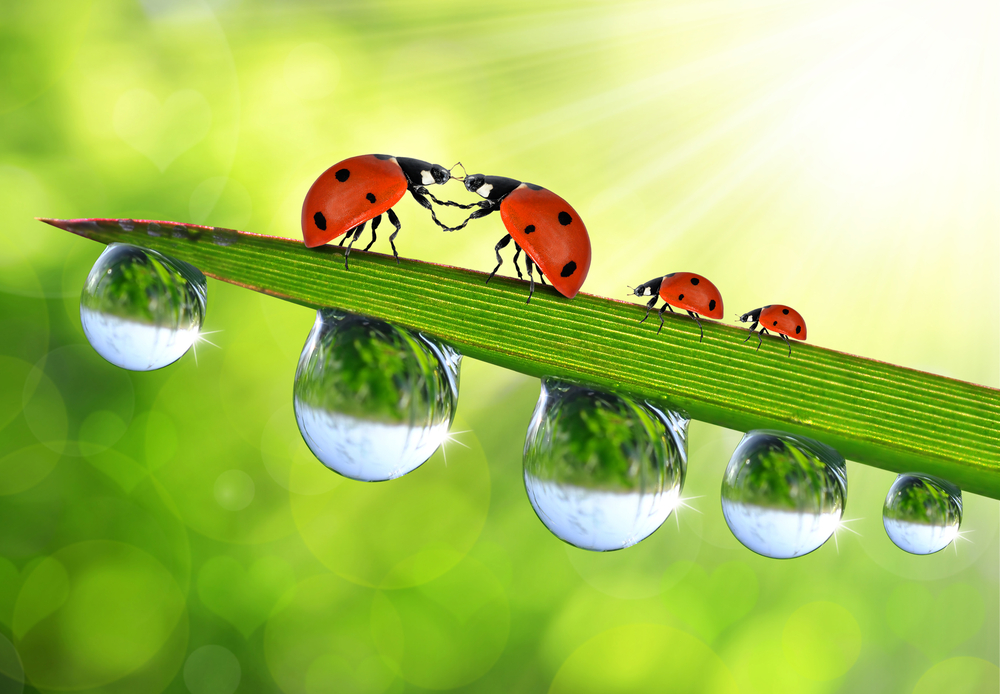The Lost Ladybug Project
- January 27, 2015
- By Christy Peterson
Kids love a good mystery, which is one of the many reasons The Lost Ladybug Project (LLP) is such a great citizen science project for classroom use. The mystery? Native ladybugs are disappearing across their former ranges. The Lost Ladybug Project seeks to discover why.
One species in particular, the nine-spotted ladybug, is the focal point of the study. However, the LLP wants to hear from participants about all the ladybugs they spot, including two other rare natives, the two-spotted ladybug and the transverse ladybug, more common natives, like the convergent ladybug and the parenthesis ladybug, and nonnatives like the seven-spotted ladybug and the multicolored Asian ladybug.
Tiny Players—Big Role
Ladybugs are beetles, members of the order Coleoptera. There are about 5,000 species worldwide and about 500 in North America. So why the concern over one species? We have learned in the last few decades that the disappearance of one species in an ecosystem can profoundly affect the entire system. Although other species may take over the niche left behind, they won’t fit the puzzle in quite the same way.
In the case of ladybugs, while another ladybug species may also eat aphids, it might not be active at exactly the same times of the year or in all the same weather conditions. This alters the protection offered to plants by the ladybugs, which in turn affects food supplies for other parts of the food web.
How You and Your Students Can Help
Lost Ladybug Project is an ideal “gateway” citizen science project. Even very young children are able to grasp the idea of a “lost” ladybug and will want to help find it. With a little guidance, they can locate ladybugs, learn to handle them gently, and even learn some basic identification skills. It is easy to layer on increasingly complex concepts like ecosystems, food webs, energy transfer, habitat, etc. for older students.
Participation in the project is straightforward and hassle-free. There is no time-consuming registration process. You don’t even have to sign up. Simply print off the ladybug field guide and participation instructions off the website. Take your group on a ladybug hunt and report your results, either online or by mail. The new smartphone app makes it even easier. Participants need only snap a photo and answer a couple questions. The data is immediately uploaded. Smartphone users do have to create a profile, but it only includes an email address and a name.
The Lost Ladybug Project across the Curriculum
All set to hunt for ladybugs? Here are a few ideas to turn your efforts into an entire ladybug-themed unit.
Math
Ladybug species have different numbers of spots, making them the perfect vehicle for teaching multiplication. Have students create one or more ladybugs with the number of spots that correlates to the multiplication fact set you are teaching (2s, 6s, 9s, etc.). Create a chart using one ladybug on the first line, two on the second, etc. until you have 10 in a row (or 12, if you are teaching up to “12s.”) To add a little science to the activity, note where the number of spots matches an actual ladybug species.
History
Ladybugs are considered lucky in many cultures. Have students research to discover how ladybugs came to be seen as symbols of good fortune. Are there different stories in different cultures? Are other insects considered lucky as well?
Reading
Here are some ladybug titles I have enjoyed recently:
• Zoom in on Ladybugs, by Melissa Stewart (nonfiction, picture book)
• A Ladybug’s Life, by John Himmelman (nonfiction, picture book)
• Ladybug at Orchard Avenue, by Kathleen Weidner Zoehfeld (informational fiction, picture book)
• Violet Mackerel’s Natural Habitat, by Anna Branford (fiction, chapter book)
• The Grouchy Ladybug, by Eric Carle (fiction, picture book)
Writing
Haiku is a great form to teach students and seems an appropriate form for a small creature like a ladybug. Place the emphasis on capturing the moment, rather than the exact number of syllables. This is truer to the original intent anyway, and often makes it easier for younger students to tackle. Just to get your students warmed up, here are a couple kids’ haiku titles: Hi, Koo! A Year of Seasons, by John J. Muth and Least Things: Poems about Small Natures, by Jane Yolen
If you’d like to try a different form with your students, take a look at Linda Sue Park’s Tap Dancing on the Roof, which is a collection of Korean Sijo poems.
Art
If you’ve been teaching young children for long, chances are good you already have a good ladybug art project up your sleeve. Here’s a variation on the theme—have your students create their own ladybug species. They can draw it or create it with colored paper, paper plates, cookies, etc. Discuss what is the same about all ladybugs and what students can vary to create their own special ladybug.
Online Resources
The Lost Ladybug Project
http://www.lostladybug.org/index.php
Connecting The Lost Ladybug Project to CCSS and NGSS, Kindergarten to Grade 2, from Tweets & Tree Frogs
http://tweetsandtreefrogs.lutegrad.com/wp-content/uploads/2014/07/Connecting-The-Lost-Ladybug-Project-to-CCSS-and-NGSS-K-to-2.pdf
Connecting The Lost Ladybug Project to CCSS and NGSS, Grade 3 to Grade 5, from Tweets & Tree Frogs
http://tweetsandtreefrogs.lutegrad.com/wp-content/uploads/2014/07/Connecting-The-Lost-Ladybug-Project-to-CCSS-and-NGSS-3-to-5.pdf

Kids Discover Talks with Book Editor Karen Cicero about Good Housekeeping’s 2025 Kids’ Book Awards
- December 22, 2025

Kids Discover Talks with Television Lighting Designer Christopher Landy About the Rockefeller Center Christmas Tree Lighting
- December 9, 2025

It’s the Most Wonderful Time of the Year… For Community Service Projects!
- December 8, 2025
